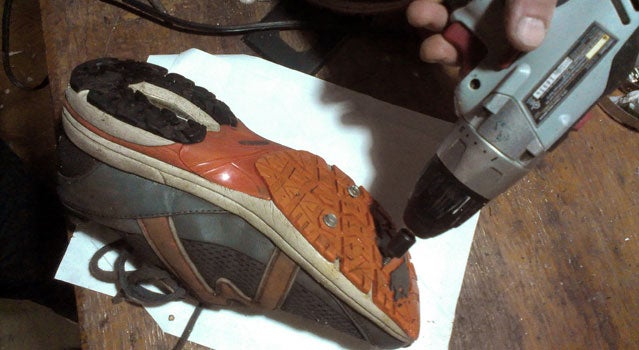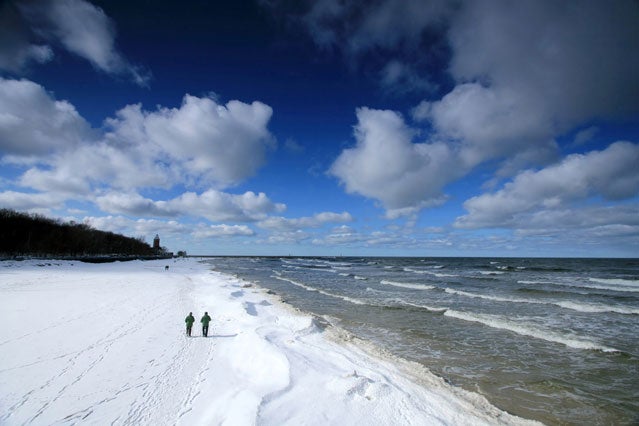It’s probably a month out until the black ice starts to form on cold roads here in Vermont, but I vow to be ready this year. In years past, I’ve spilled hard a couple of times because I underestimated the slickness of the winter pavement. Then, I cheaped out and bought low-end , ones that aren’t made for running, and they wore out fast. The springs broke, the rubber snapped, and they started falling off at odd moments. I went through three pairs in as many months. I do love Yaktrax, though, so I was excited to hear that the North Carolina-based company released a new version for runners for the upcoming season, called the .
After the jump, we’ll look at the new Runs in detail, and also try out a favorite low-rent alternative of many runners: the age-old practice of winterizing any pair of running shoes with a handful of sheet metal screws.
The Best Running Solution for Icy Roads: Yaktrax Run

Many runners love the sure-footedness of Yaktrax, those rubber and steel coils that fit over your shoes and offer great traction. But there have always been two problems with the product for the sport, both of which the new solves.
The first was a lack of feel for the road. In my own experience of previous versions of Yaktrax, the spring-like coils in the forefoot felt too squishy when my foot landed. The ride felt unnatural and distracting. The $40 Yaktrax Run use carbide steel spikes in the forefoot and signature Yaktrax coils in the heel, a nice combination that lets the forefoot land closer to the ground, and provides both cushioning and traction in the heel. The slip-ons only add four ounces to each shoe.
The second improvement to the Runs is the use of 1.4 mm steel in the springs, a thicker gauge than in the entry-level Yaktrax Walk (which can be picked up for around $8). It’s the same gauge used in the Pro models. This should make the Runs last a lot longer. But sooner or later, the springs will wear out on these too. As many inveterate Yaktraxers know, you can always get more miles out of a broken pair with a little creativity and some needle nose pliers.
The Runs are also beefier and have reflective tape for night running. They come in four sizes from small to extra large, and the company is also careful to point out that the natural rubber will become brittle in temperatures below -41 degrees Fahrenheit. If you’re still running in that, you’re more dedicated than I.
The Best Running Solution for Icy Roads: DIY Sheet Metal Screws

There’s a cheaper way to add traction to a pair of shoes without buying Yaktrax, , , or any of the other popular accessories runners use to ply icy pavement. It’s the practice of driving common sheet metal screws directly into the rubber outsoles of running shoes. You could say it’s an underground practice, but some road clubs now bring a box of screws and a cordless drill to winter workouts in case anyone wants to upgrade their kicks then and there. As explains, you simply drive 18 or so fasteners into each sole before starting out. They add only a fraction of the weight of the slip-on accessories. Then, at the end of the season, you back them out and can still use your favorite shoes in warm weather.
For our test of the sheet metal method, I outfitted my beloved Karhu Fulcrum Rides, shown above, and results were mixed. It’s certainly cheap, fast, and easy. (On Amazon, you get 100 screws for about six bucks shipped.) But in practice, the screws wore down pretty fast on asphalt. One fell out after catching on a rock on a fast downhill.
An alternative to sheet metal would be to upgrade to screws that are specifically engineered to add traction to running shoes: . These steel composite screws last for 500 miles, bear a special head that resists collecting debris from the ground, and come with a serrated washer that holds them in. They cost $17 for enough Icespike fasteners for a pair of running shoes, many times more expensive than ordinary screws. And unlike the slip-on traction accessories, you can’t take them off at the gym. N.b.: Running on the treadmill with any kind of screws drilled into your shoes will get you banned for life at most heath clubs.


